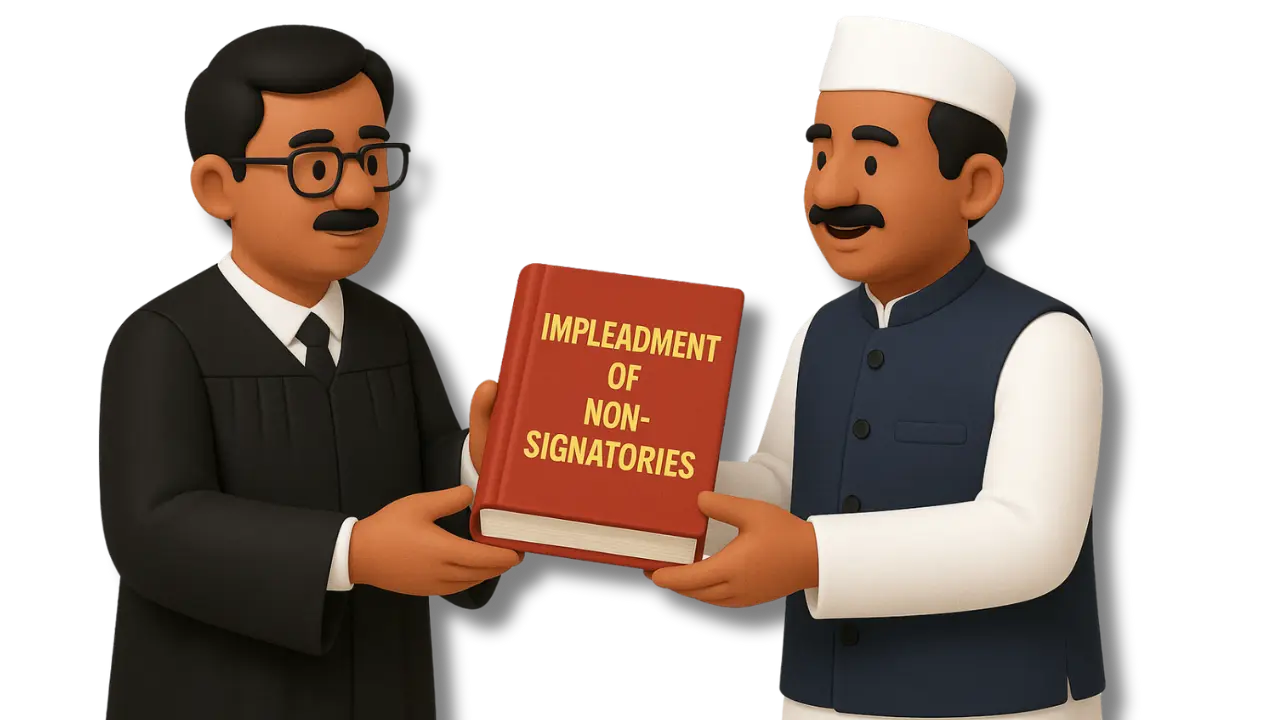Introduction
In the dynamic landscape of insolvency law, a question frequently looms large: When does a business risk devolve into an act of fraud? This critical distinction lies at the heart of Section 66 of IBC1, which targets fraudulent and wrongful trading by those in charge of theCD. This provision serves as a powerful deterrent against directors and partners who misuse their position, compelling them to contribute to the CD’s assets. But what are the precise legal tripwires?
Section 66 is bifurcated, addressing two distinct scenarios. Sub-section (1) deals with Fraudulent Trading, which is fundamentally about intent. It empowers the AA2 to pass contribution orders against persons who carried on the CD’s business “with intent to defraud creditors” or “for any fraudulent purpose.” What, then, is the standard for proving such a fraudulent intent?
Sub-section (2), often referred to as Wrongful Trading, focuses on a failure to act responsibly when insolvency is inevitable. It provides that a director or partner can be held liable to contribute to the CD’s assets if they knew or ought to have known (before the Insolvency Commencement Date) that there was no reasonable prospect of avoiding the commencement of CIRP, AND did not exercise due diligence in minimizing the potential loss to the creditors. Does the non-exercise of due diligence alone suffice, or must it be coupled with the prior knowledge of inevitable insolvency?
Given the severity of a finding of fraud, the NCLAT has consistently stressed that invoking Section 66 demands a very high standard of proof. Is mere loss or a poorly executed transaction sufficient to prove fraud? Absolutely not.
In the case of Regen Powertech Pvt. Ltd. vs M/s Wind Construction Pvt. Ltd. and Ors3.The Tribunal clearly articulated that a fraud perpetrated on a creditor during the course of business does not automatically imply the business was carried on with an intent to defraud the creditor. The NCLAT noted that directors acting on a ‘bona fide belief’ that the company could recover from its financial woes will not be held liable for fraudulent trading. Does this ‘bona fide belief’ necessitate proof of a ‘very high degree of proof’ attached to the ‘fraudulent intent’ demanding ‘more compelling material/evidence’ to satisfy the Tribunal on a ‘preponderance of probability’? The Tribunal’s answer is affirmative.
Echoing this strict stance, the NCLAT in Renuka Devi Rangaswamy vs. Mr. Madhusudan Khemka and Ors4., reiterated that the expression ‘Party to the carrying on business’ implies ‘taking positive steps’ in carrying on the company’s business in a ‘fraudulent manner’. The Tribunal underscored that ‘Dishonesty’ is an essential ingredient of ‘Fraudulent Trading,’ which ‘is to be established and it cannot be inferred in any manner.’ Can a director be proceeded against for ‘Wrongful Trading’ simply because of ‘Negligent Failure of Management,’ or is the standard of skill and experience expected of a director also a factor in determining liability? The Tribunal confirmed the latter, emphasising the requirement of establishing the director’s dishonesty.
Furthermore, in Shibo Job Cheeran & Ors. vs. Ashok Velamur Seshadari, liquidator of M/s Archana Motors Ltd5. the Appellate Tribunal consolidated the elements required for a successful Section 66 application: the business must be carried out with an intent to defraud creditors, and directors must have participated despite knowing the likelihood of insolvency. Does this mean that for a director to be held liable, they must have known that the company was insolvent but continued to run the business with dishonest intentions? The NCLAT upheld this view, while maintaining that due diligence is presumed if the director acted as reasonably expected in the ordinary course of business.
This body of jurisprudence leads to the core issue of evidentiary weight. Can a TAR6, which flags a non-profitable or poorly executed transaction, be the sole basis for a finding of fraudulent trading?
The NCLAT’s decision in the instant matter unequivocally confirms that a transactional audit report alone cannot be termed as a conclusive piece of evidence to prove fraud under Section 66. The Tribunal emphasized the strict joint reading of Section 66(2), noting the use of the conjunctive “and”: the director must know there is no reasonable prospect of avoiding CIRP AND did not exercise due diligence. Was the legislative intent for ‘non-exercise of due diligence alone… to be not sufficient to label a transaction as fraudulent’? The Tribunal’s interpretation suggests this is indeed the case.
Finally, does the law permit the labelling of every business decision that results in a ‘loss’ as ‘fraudulent’? The NCLAT cautioned against this, emphasizing the need to view such transactions in the ‘broad spectrum of commercial wisdom.’
By setting aside the Adjudicating Authority’s order, which had relied primarily on the TAR, the NCLAT has reinforced the principle that the IBC is a restructuring law, not a weapon to punish every instance of failed commercial judgment. The threshold for establishing fraudulent or wrongful trading remains exceptionally high, requiring compelling evidence of dishonest intention or a clear failure to act responsibly when insolvency was certain, rather than just an auditor’s adverse finding. The reliance on precedents like Amardeep Singh Bhatia vs. Abhishek Nagori and Mr. Thomas George vs. K. Easwara Pillai7 further strengthens this narrative, confirming that due diligence is presumed if the director acted as reasonably expected in the ordinary course of business. This judgment provides much-needed clarity, ensuring that directors are protected when taking genuine commercial risks, even if those risks do not pay off, provided they are not tainted by proven fraudulent intent.
Conclusion
The NCLAT’s ruling serves as a vital judicial guardrail, fundamentally distinguishing between imprudent business ventures and malicious, fraudulent conduct. By elevating the required burden of proof—insisting on clear evidence of dishonest intent or the simultaneous dual failure of knowledge of inevitable insolvency and lack of due diligence—the Tribunal has successfully shielded the principle of commercial wisdom from undue punitive action. This judgment essentially declares that an adverse Transactional Audit Report, while serving as an important flag to initiate inquiry, is merely the beginning of the legal process, not the conclusive end. The law, as meticulously articulated through precedents like Regen Powertech and Renuka Devi, demands a deeper, evidence-backed probe into the directors’ actual state of mind and actions, ensuring that the heavy artillery of Section 66 is judiciously reserved for genuine economic offenders, not merely those whose calculated business risks unfortunately failed.
Looking ahead, this decision significantly raises the compliance challenge for Resolution Professionals and Liquidators. They can no longer treat the transactional audit as a convenient summary of guilt; rather, the report must now serve as a strategic blueprint for gathering the compelling extrinsic evidence necessary to establish the high standard of mala fideintent. This shift in evidentiary focus leads to critical questions that future litigation will inevitably be forced to address: Where, precisely, does the line move between a director’s negligent failure to foresee impending insolvency and their explicit or inferred knowledge that it was unavoidable? Furthermore, how will the Tribunal quantify and enforce the standard of ‘due diligence’ in highly specialized financial sectors where risk is inherently necessary for capital growth? Ultimately, this judgment solidifies the IBC’s commitment to corporate governance, ensuring directors are held accountable only when a proven, genuine dereliction of duty, informed by fraudulent intent or willful blindness, can be demonstrated.
Citations
- Insolvency and Bankruptcy Code
- Adjudicating Authority
- Regen Powertech Pvt. Ltd. vs M/s Wind Construction Pvt. Ltd. and Ors.and Ors., 2022 SCC Online NCLAT 3801
- Renuka DeviRangaswamy vs. Mr. Madhusudan Khemka and Ors., 2023 SCC Online NCLAT, 1722
- Shibo Job Cheeran & Ors. vs. Ashok Velamur Seshadari, liquidator of M/s Archana Motors Ltd., 2023 SCC Online, NCLAT 804
- Transactional Audit Report
- Amardeep SinghBhatia vs. Abhishek Nagori liquidator for asiannatural resources (India Ltd.), CA (AT) (Ins) No. 671 of 2020
Expositor(s): Adv. Anuja Pandit






